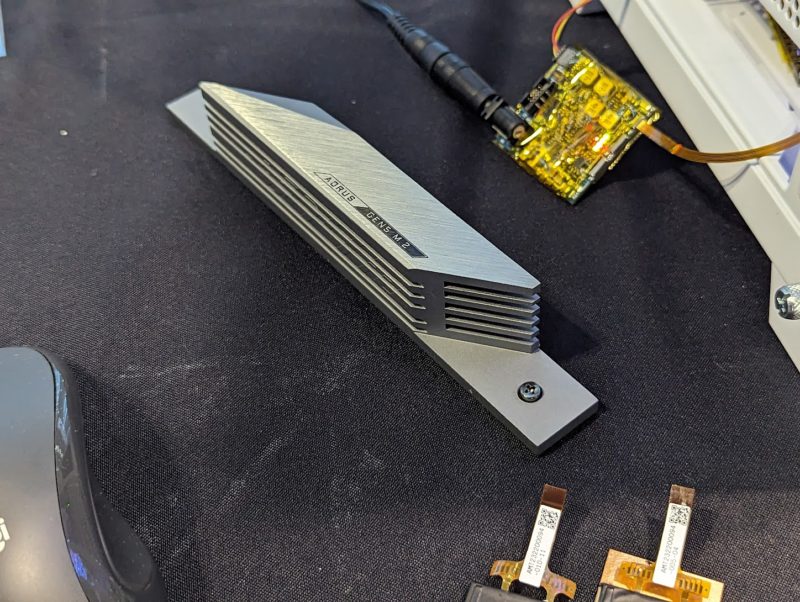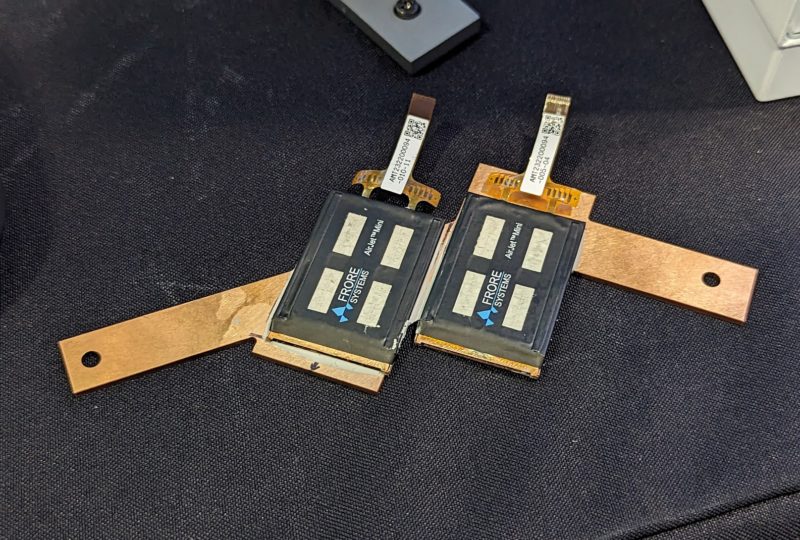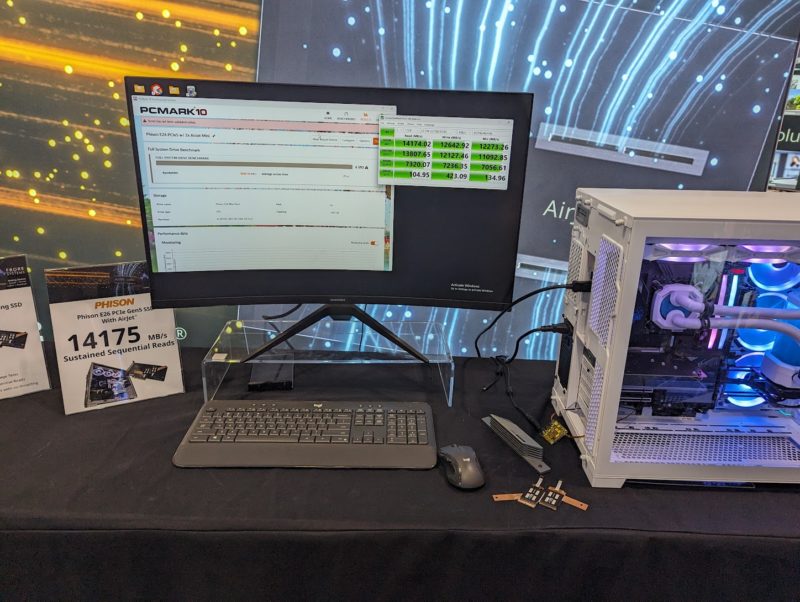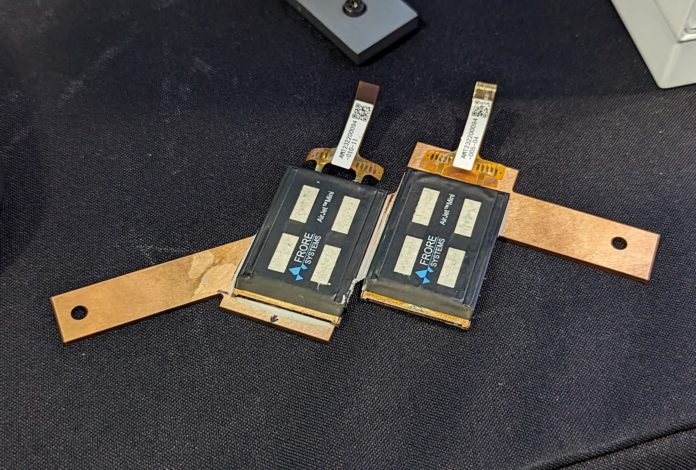At FMS 2023, we saw a cool demo on the show floor. One part of it was a new Phison E26-based PCIe Gen5 NVMe SSD that was hitting sequential read speeds of over 14GB/s. The second part of it was the cooling. Instead of just a giant passive heatsink, the SSD was cooled with a Frore cooler which moves air without a fan.
A New Take on Passively Cooled PCIe Gen5 NVMe SSDs
Just for some sense of scale, this is an Aorus cooler for a M.2 PCIe Gen5 NVMe SSD. It is large and it still requires a little bit of chassis airflow.

Here is an example cooler from Frore. The Frore AirJet is a solid-state cooler that is able to create airflow to cool components in a low-profile design and without a traditional moving fan. It is probably a bad comparison, but it is the same type of “wow that is cool” technology as when you first see a Dyson Cool fan.

The result was pushing over 14GB/s on CrystalDiskMark by using an AirJet instead of a fanned solution with moving parts. Many do not want fans if they can be avoided since those are failure points on motherboards.

The Phison E26 is set to usher in a new wave of PCIe Gen5 NVMe SSDs. We have seen drives at 10GB/s and 12GB/s but we are about to see these 14GB/s sequential read single M.2 SSDs in the near future as more drive makers adopt the new controller.
Final Words
This was a cool demo that Patrick and Bryan saw at FMS and I have heard a lot about so we have a quick write-up on it. The AirJet technology is something different than all of the fans out there which means it can be low profile and quiet. PCIe Gen5 M.2 SSDs are notoriously hot right now requiring huge heatsinks. This should lower the area needed to cool drives and maintain optimal performance as the live demo at FMS 2023 showed.





But do they really require huge heatsinks? From the few PCIe 5.0 NVMe reviews I’ve seen, the M.2 slot heat sink included with most motherboards is sufficient to keep the drive cool and not throttle. While AirJet is a cool technology, it’s overkill in this application.
This is very cool technology. Going fanless and having airflow without moving parts is very impressive, but it is weird to call a pump “passive”. Passive traditionally means something that does not require power.
To quote the main page of froresystems website: “AirJet® by Frore Systems is the world’s first solid-state chip for active device cooling…”. Calling it solid state or fanless would make a lot more sense.
What a weird article. Frore coolers aren”t passive.
I agree, there is movement there.
Also… why is it taking them forever to enter the market?
How much more active can you get than something that uses power to blow air? It’s a fancy fan with tiny flapping blades, literally the opposite of passive.
@snek. Not only are they not passive, they’re not “no moving parts” either. What they are is solid-state. The parts that move, move only linearly, in-place, with no lubricants, bearings etc to wear in the traditional way. But the piezo elements can still wear out.
Frore AirJet Mini: 0.21 cfm with 1 W (max)
Noctua NF-A4x20 5V PWM: 5.53 cfm at 0.5 W (max)
Requires a niche use.